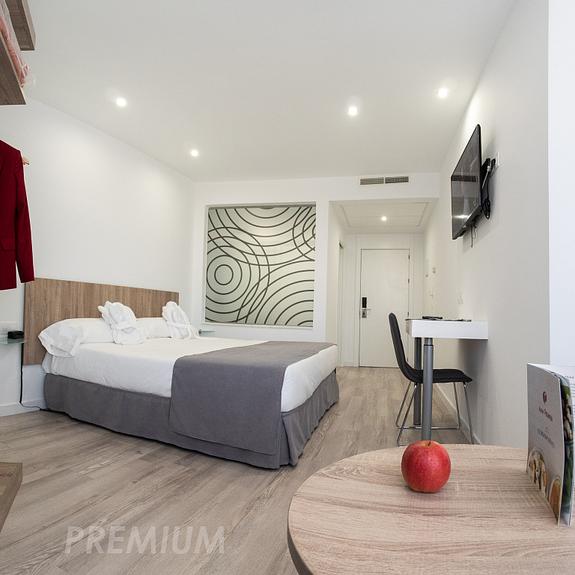Discover Seville
Cathedral
The Cathedral of Seville, or Cathedral of Santa Maria de la Sede, was declared a World Heritage Site by UNESCO and with its 23,500 square meters makes it the largest Gothic cathedral in the world.
It stands out its bell tower, Giralda, symbol of the city that with its 97.5 meters high was once the tallest tower in the world.
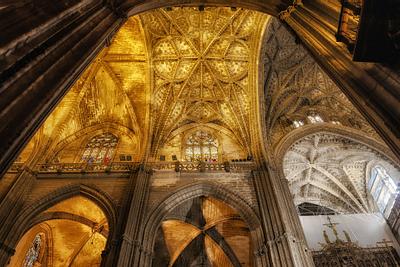
Plaza de España - Spain Square
The Plaza de España in Seville was built for the Ibero-American Exhibition of 1929 and it symbolizes Spain's embrace to its former American territories.
Placed at the Maria Luisa Park, its two 74-meter-high towers stand out, as well as the 4 bridges that are used to cross the inner channel that symbolize the four ancient kingdoms that formed Spain (Aragon, Castilla, León, and Navarra) as well as the 48 benches that represent the two archipelagos (Balearic and Canary Islands) and the 46 Spanish provinces (except Seville) decorated with an image made of ceramic which is representative of each of them.
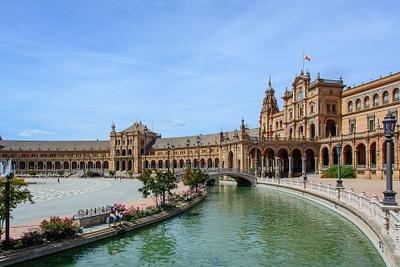
Real Alcázar – Royal Palace
Declared a World Heritage Site by UNESCO, the Real Alcazar is the oldest Royal Palace in Europe which is still in use. It is made up of several buildings from different eras where the influence of the different cultures that have passed through Seville can be noted. Particularly beautiful is walking through its gardens, surrounded by greenery, orange and palm trees.
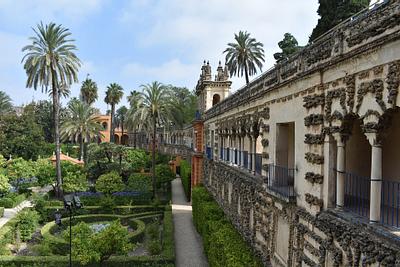
Torre del Oro - Gold Tower
This tower was named as “Gold Tower” because of the golden reflections that produced the tiles (which are currently not preserved). It dates from XI century and was part of the city walls and it indicated the access to the Port of Seville.
After going through several uses, such as capillary, port captaincy offices, and even a prison, it is currently used as a naval museum.
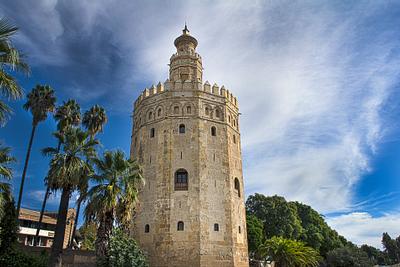
Casa Pilatos – Pilate’s House-Palace
It is considered the prototype of an Andalusian house-palace. It was built between the 15th and 16th centuries where combines the Italian Renaissance with the Sevillian Mudejar style.
The name of Pilate’s Palace cames from the 1520s, since from this place, started the "via crucis" of the city ending in the temple of Cruz del Campo (lit. Cross of the Field), which is considerated the germ of Seville's Holy Week.
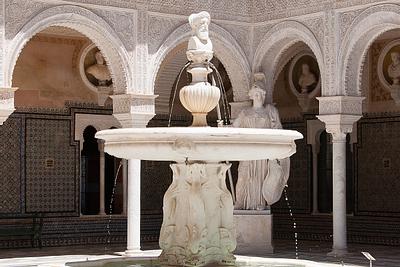
Palacio de Dueñas – Dueñas’ House Palace
The Dueñas’ House Palace was built between the fifteenth and sixteenth centuries and is part of the heritage of the House of Alba and it receives its name from the disappeared Santa María de las Dueñas monastery.
It can highlight its extensive artistic collection and the splendor of its courtyards and gardens. In his dependencies the Spanish poet Antonio Machado was born and lived his childhood.
Palacio de la Condesa de Lebrija – Countess of Lebrija’s House Palace
This palace house was built in the fifteenth century, preserves archaeological remains of immeasurable value, such as 580 square meters of Roman mosaics of floors and walls, different elements of the Roman and Arab ancient times, as well as pictorial works by Van Dyck, Brueghel the Elder and paintings of the Murillo School.
Plaza de Toros de la Maestranza - Bullring
The bullring of the Maestranza, considered an Asset of Cultural Interest, dates from the 18th century and contains inside the Bullfighting Museum, where in addition to elements used in the current bullfighting world such as bullfighters costumes, cloaks, posters etc, they display a collection of paintings from the 18th, 19th and 20th centuries as well as different lithographs and prints.
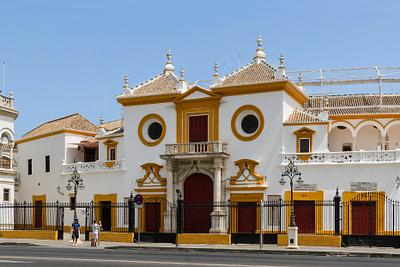
Museo de Bellas Artes – Fine Arts Museum
The Museum of Fine Arts in Seville is the second most important art gallery in our country after the Prado Museum. It is located in the former Convent of La Merced Calzada of the thirteenth century where you can see pictorial works by authors such stories as Murillo, Zurbarán or Valdés Leal.
Iglesia y Hospital de la Caridad – Charity Church and Hospital
In Sevillian baroque style, the Church and Hospital of the Holy Charity of the seventeen century is closely linked to the history of the city. It displays in its interior, works of inmeasurable artistic value, such as the main altarpiece as well as works by Murillo and Valdés Leal.


